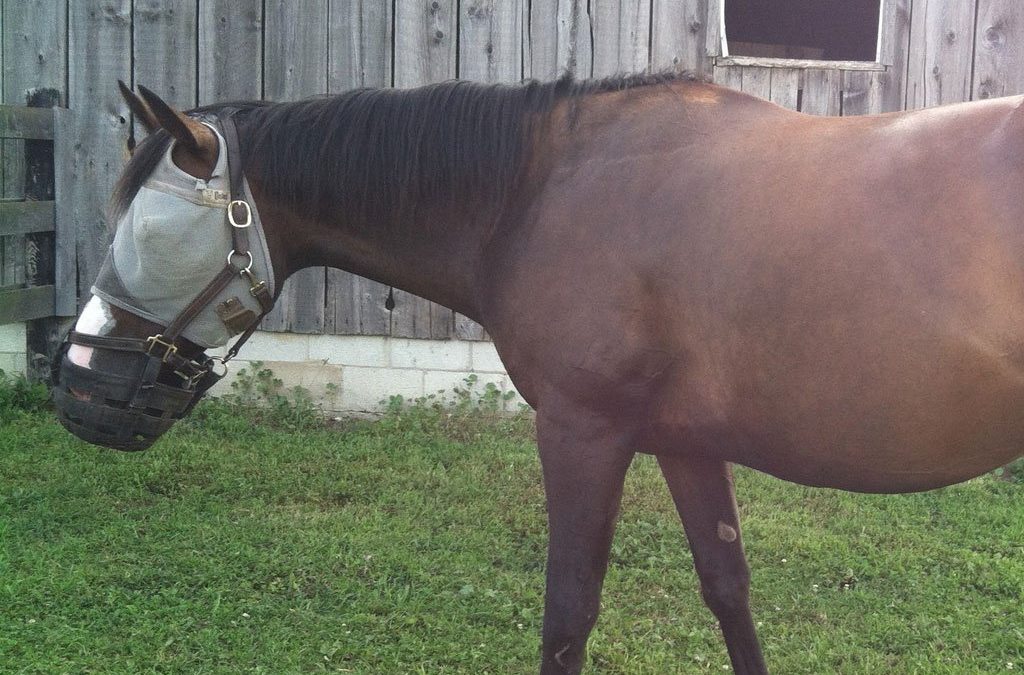Determining the Best Way to Manage Metabolically Challenged Horses on Pasture.
We all have had at least one or two horses that cannot be left to free range on pasture due to risk of laminitis or colic, seem to gain weight while barely eating anything and are clearly metabolically challenged and may have Cushing’s disease, impaired glucose metabolism and/or insulin resistance. Trying to manage these horses on turn out can be a nightmare, especially if you live in an area where pasture is rich and abundant. But with some forethought and planning, a happy medium can be found for both you and your horse, so that everyone can be happy and stress free!
Before discussing pasturing options, let’s take a quick look at the basic management strategies that should be employed for our easy keepers:
- Feed low calorie hay that has been checked low in starches and sugars so that the horse can have ample amounts to eat continuously. Triple Crown Safe Starch is the perfect forage products for this type of horse as it is a fully fortified, complete forage based feed.
- Use a Protein, Vitamin and Mineral supplement such as Triple Crown 30% to supply these nutrients without adding extra calories from grains and fats if you are feeding medium to lower quality hay.
- Exercise on a daily basis to maintain healthy organs, muscle, hoof and reduce insulin resistance
- If Insulin resistance has been diagnosed, supplement accordingly with targeted nutrients that have been shown to help improve this imbalance. Be sure to check with an equine nutritionist for advice on how to do this correctly.
- Minimize stress from herd mates, heat, flies, hunger and boredom as these all increase cortisol levels which in turn increases metabolic imbalances
Deciding how to limit pasture intake for an individual horse depends on your boarding set up and the individual horse’s personality. Management of the at risk horse may also require using several different techniques in rotation. The ideal situation is to turn the horse out in a muzzle with his buddies. Most horses prefer staying with the herd, still being able to eat a small amount of fresh forage and benefit greatly from the exercise provided by free ranging. Some horses however, greatly resent the muzzle and this could increase stress. I have seen a significant number of horses take up cribbing after being muzzled for several years. If the horse is one that is prone to vices, muzzling continuously when pastured may not be ideal for that individual. A combination of dry lot one day or evening and muzzle the next may be more effective as it “breaks” up the monotony of only one routine. This is the ideal set up for most horses that must have restricted pasture.
Leaving the horse in a stall most of the time is the least desirable way to manage a chubby horse. Stress, lack of movement and exercise, isolation all lead to a miserable horse that will be more prone to injury and disease as well. For the well- being of the horse – Find a way to get ‘em out!
This blog was originally posted on Tuesday, October 8,, 2013 at Equine Nutrition and Health Services Blog. Blog article was re-posted with permission from blog owner, all rights reserved.

